What does summer mean to you? Lazy days by the beach? Hoping the aircon isn’t too cold at work? Everyone is different. But for marketers, summer done right is all about creating energetic and innovative campaigns. Yes, 2020 has made things more challenging. But who’s totally nailing their marketing efforts this year? Let’s take a look at the best of summer 2020 marketing.
#1 Waitrose – Scrumptious Summer
Lockdown, no lockdown. Masks, no masks. We’re not going to dwell on it. What we are going to focus on is food. Everyone loves delicious cuisine and Waitrose is getting everyone’s mouth watering with their Scrumptious Summer campaign. Oh, how we love a bit of seasonal alliteration. This includes recipes, top tips and inspiration for BBQs, picnic days, summer puddings, refreshing drinks – and more.
- There’s a whole section of their website dedicated to Waitrose party ideas. This is pure genius as it’s packed with tempting imagery that’ll have you whipping cream and making smoothies in no time. Instant digital recipes means no faffing around with cookbooks.
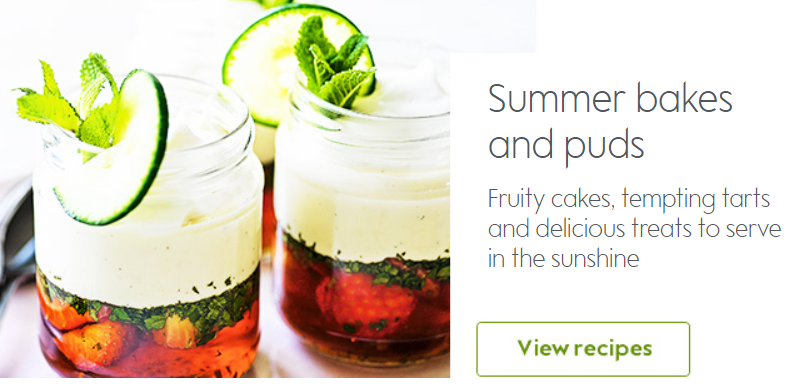
- The customer ratings section is also a nice touch as it induces FOMO. If you think other people are enjoying such deliciousness – why aren’t you? You can also rate the recipe, which gives Waitrose an additional point for engagement.

- The summer theme is continued across social media, with videos showing how to make scrumptious holiday favourites. This clip features Waitrose Food Editor, Silvana Franco, helps to give the content authenticity. And, while many people aren’t flying abroad this year, it also adds a touch of culture, tapping into the Spanish holiday nostalgia of consumers.
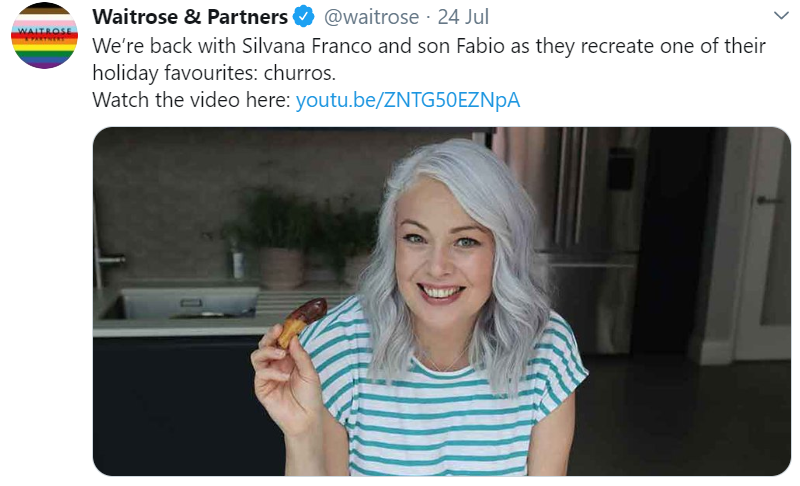
- Head to Instagram for even more delicious summer food inspiration, with the #summerdessert hashtag making the post trendy, seasonal and easier to find.
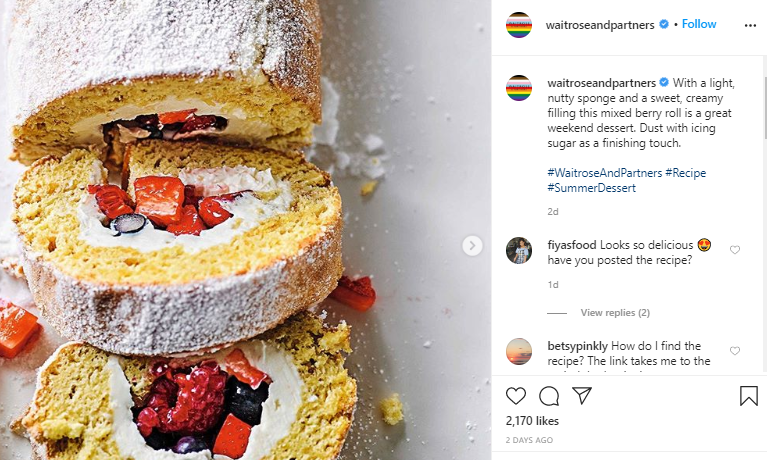
Top tips for food posts this summer:
- Utilise flat lay photography – this shows what you’re trying to promote from above and is a trending, birds eye view technique for 2020.
- Think about statement furniture and accessories. Instagram is all about the visuals and you need to make your photos pop with complementary textures and colour schemes.
- Whether you’re showcasing a restaurant special or a new dessert, make the most of natural lighting as this will result in a clearer image.
- Post at the right time. Like, before meals when people might be popping to a shop, café or eatery because they’re hungry.
- Adapt your posts to suit the time of day. A three-layer cheeseburger with bacon might look desirable at 6pm on a Friday night. But probably less so at 9am on a Monday when consumers are most likely thinking about work and healthy eating. The more you tap into the flow of consumer life, the more relatable you’ll become.
- Tune into the mood of the nation. Staycations, BBQs, picnics and home improvements are the order of the day.
A note on hashtags
Don’t forget your branded and non-branded hashtags as these make your content discoverable. Remember, it’s not about getting seen by a lot of people, but the right people. That’s how hashtags lead to higher engagement and more followers.
Pick and choose the right keywords for each post individually. Instagram breaks hashtags down into nine categories: product/service, niche, community event, seasonal, location, daily, acronym and emoji. The consensus is that about 11 hashtags is a good number to start with. But the most common number of hashtags to use on Instagram is between 1 and 3. Do some testing to see what works for your brand.
#2 Jamie’s Italian – ‘New is So You’
If you want to provide go-to content that doesn’t require scheduling, how about making use of the Facebook Stories feature? Just like the Summer Menu from Jamie’s Italian Cyprus. Stories are watched by over 500 million Instagram Users every day and provide additional interest to your page as well as visual appeal. Be sure to tell people what they can expect and accompany your story with tempting imagery and descriptions. You can also post content from other chains if you’re an international brand.
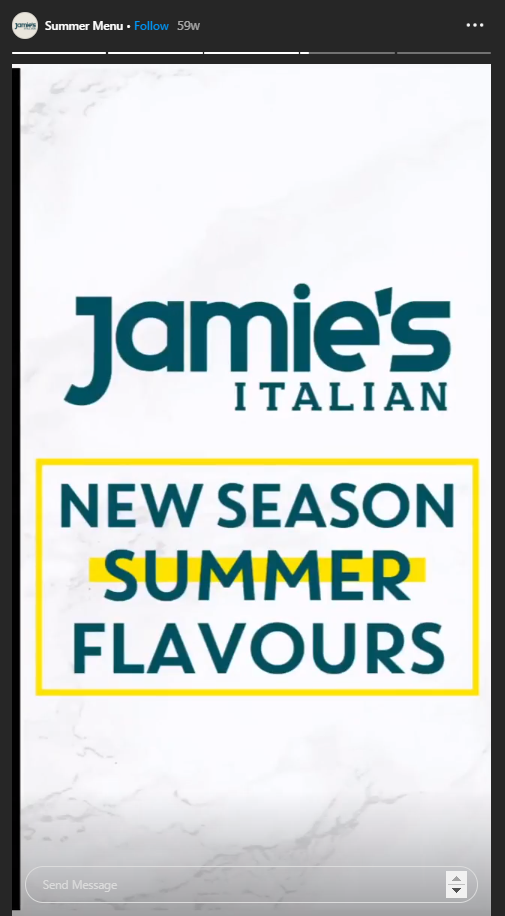
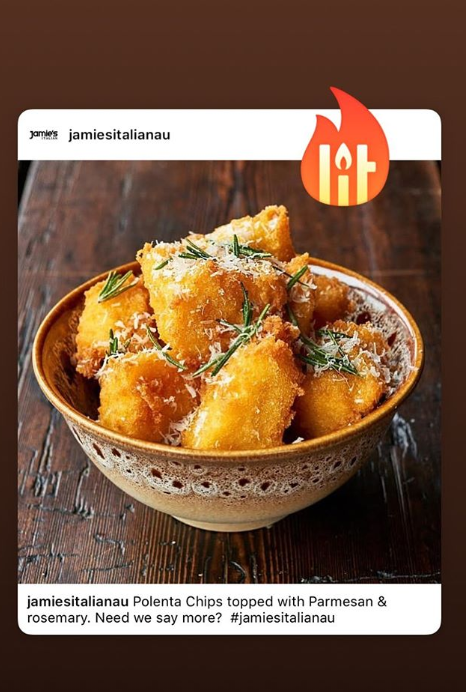
Top tip for marketers: Using words such as ‘New Menu’, ‘New Flavours’ and ‘New Season’ increases temptation as it tells consumers you’re offering something they’ve not seen before. Don’t just let new dishes float onto your menu like they’ve always been there as this won’t generate excitement.
Similarly, use language that reflects the time of the year such as ‘Summer’ ‘Light’ ‘Refreshing’ Seasonal’ and so on to entice consumers. Become known for creative, in-the-moment marketing.
#3 New Look… And the Great British Summer
As a fashion retailer, it’s essential to think about your target market. Why? Because places like the UK don’t have a warm, sunny Mediterranean climate. Blue skies are a bonus. So, it’s important to think about who you’re talking to in order to form a genuine and thoughtful audience connection. New Look UK fully grasps the sentiment of UK consumers who know it’s summer – but (let’s face it) will probably have to dress a bit warmer.
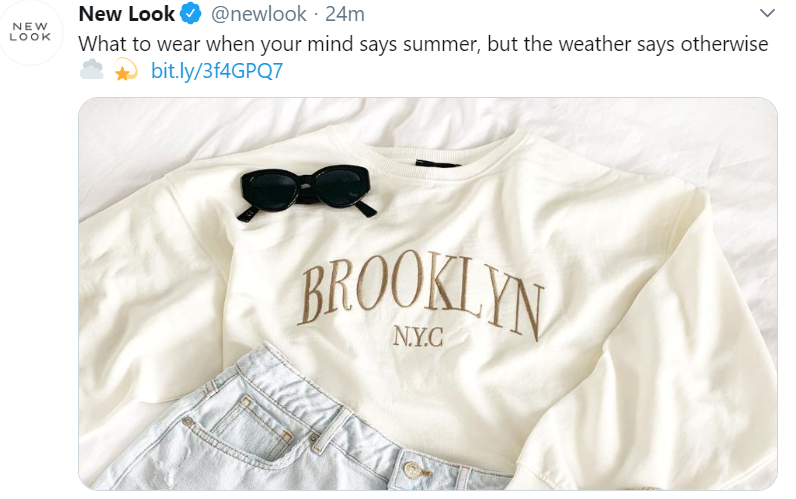
Top tips for marketers: Include a link to a shoppable page. And when the consumer clicks through, make your calls to action super easy to see.
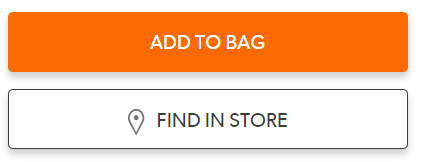
New Look is also rocking a 90s fashion campaign, encouraging consumers to shop their retro range while simultaneously promoting a whole range of discounts. Here’s why we like it.
- New Look has a strong millennial following. So, tapping into the 90s on social media is a concept New Look fans can understand and get behind. Always think of your target market when coming up with a relatable campaign.
- The brand got creative with this awesome GIF featuring much-loved and remembered 90s stars kitted out in retro gear for inspiration. Tweets with GIFs can boost engagement by over 50%, so it’s worth livening up your posts.
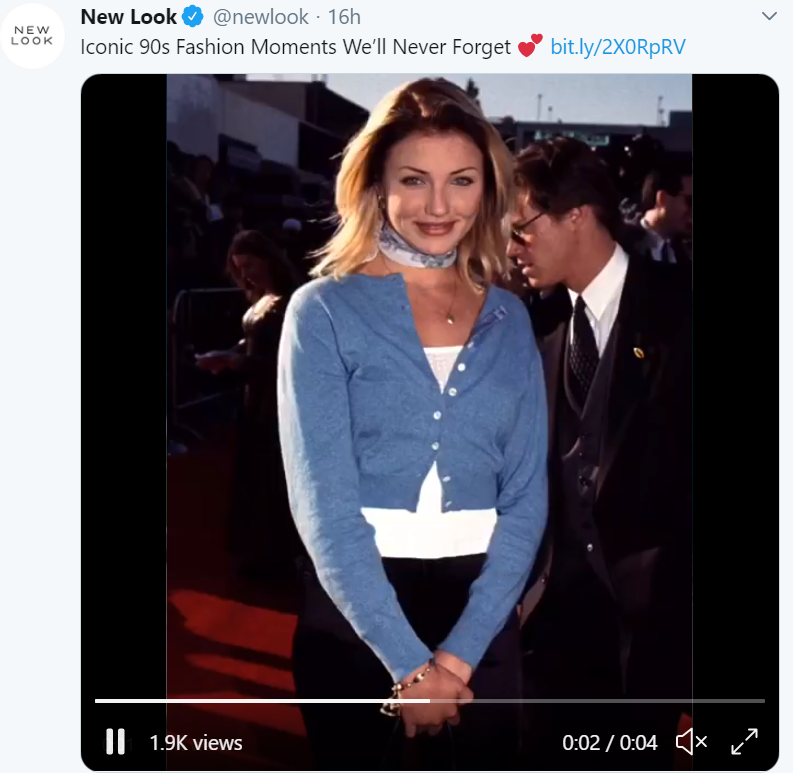
- New Look created and linked to an article discussing retro style in detail. This included shoppable imagery and clear price reductions showing how content can be used to drive people down the sales funnel.
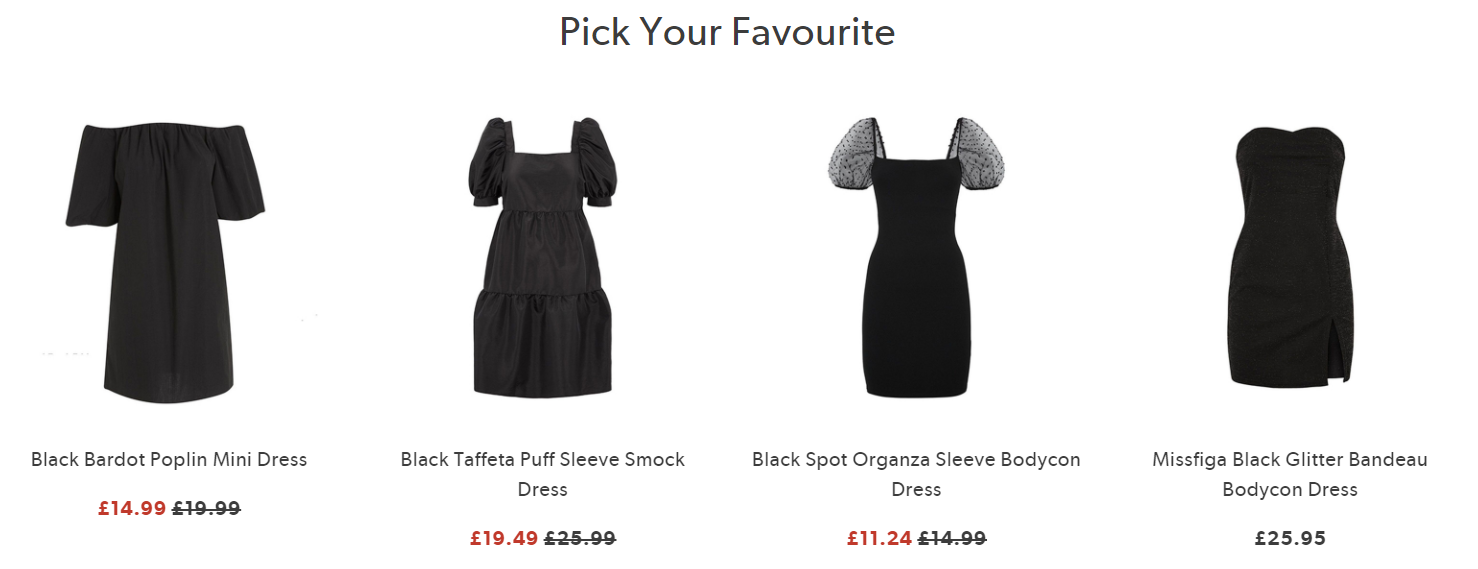
- The article finished with a dominant call to action

Top tip for marketers: Create a shoppable blog as this provides a secondary, unique space for editorial content that can inspire and inform shoppers. A blog that is constantly updated with fresh, unique content will encourage shoppers to return and make your brand a source for expert information. When consumers are accessing your website for education and entertainment as well, your brand can reach a new level. Shoppable blogs are a great way to draw attention to a particular range or campaign. They can also make your sales more interesting and attract a wider audience as blog content can be circulated via social.
#4 Sephora – Influencer Collaborations
One of the best ways to promote your product in this digital age is to form collaborations with influencers that are right for your brand. Beauty brand Sephora teamed up with makeup guru Patrick Starrr to promote the upcoming @OneSizeBeauty range launching at Sephora. Starrr has over 603.9K Twitter followers and 4.44 million followers on YouTube with such a partnership boosting brand awareness. The Patrick Starrr promotional Twitter video received 12.7K views in the space of two days.
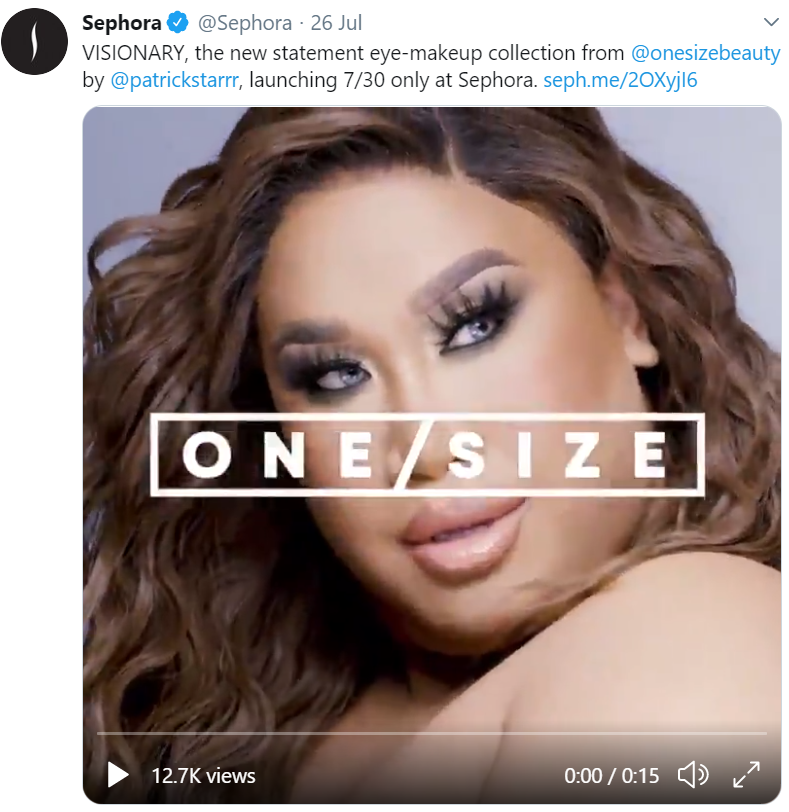
Top tip for marketers: Tag the relevant people in your campaigns to boost engagement. It’s also a good idea to create excitement by including launch dates. And, just like Sephora, link to a shoppable product page from your social accounts.
Sephora is a huge brand with a large budget. If you’re operating on a smaller scale, don’t forget that micro-influencers with between 1,000 and 100,000 followers can benefit your brand, so long as they are a good fit. Here’s why:
- According to recent reports, influencers on the following platforms will charge an average of $25 per 1000 followers on Facebook, $10 per 1000 followers on Instagram and $10 per 1000 followers on Snapchat. So, the less followers an influencer has, the cheaper.
- Micro-influencers tend to have better engagement. Those with less than 1,000 followers generally receive likes on their posts 8% of the time. Users with 10 million plus followers only receive likes 1.6% of the time, on average. This shows a downward correlation between follower sizes and post likes.
- Over 82% of people are highly likely to buy something a micro-influencer recommends.
Choosing a good influencer fit for your brand means:
- Finding someone who organically talks about topics relevant to your company and has a following of people interested in the sort of things you offer. They might have worked with similar brands in the past and regularly post fresh content.
- Taking a close look at the standard of their consumer engagement to ensure they interact with their followers. It’s all about research and not simply opting for someone with a million followers and no interest in forming a close bond with your brand. Influencer marketplaces such as Boksi make it easier for brands to find relevant content creators quickly. The aim is to ensure your brand is represented the way you and your followers prefer across channels.
Summer marketing is in full swing and there are some great campaigns around this year despite these ‘unprecedented times’ (my new banned words). What’s your favourite summer 2020 marketing campaign? Tweet me @Charli_Says and let me know.